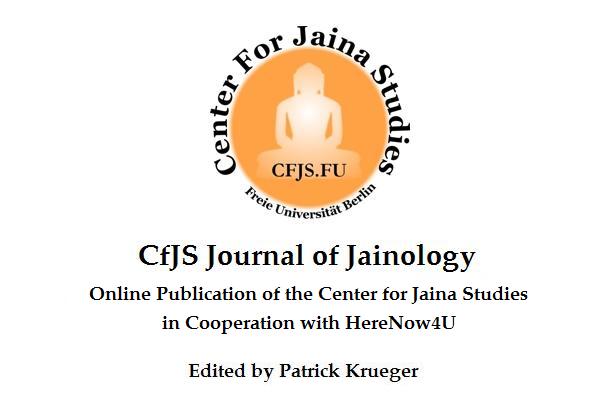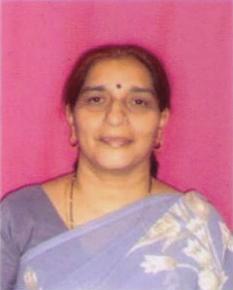
Contribution of Prakrit Literature to Indian Literature
In comparison with Sanskrit the educated and cultured class generally known very little of Prakrit languages. The ever-flowing stream of human language continue since time immemorial. It is import to know the exact status of Prakrits among the available stock of 2000 languages of the world divided into 12 major families. The Indo-European is a major family among them. The Indo-Aryan constitutes a major branch of the Indo-European family. The Indo-Aryan family is subdivided and titles as Old,Middle and New. The ancient language of the Vedas particularly that of Rigveda belongs to this period.
Besides the vedic as a literary language, many regional dialects were prevalent among the common people. George Griersson in his Linguistic Survey Of India has referred to all spoken or colloquial languages during and before the Vedic period as Primary Prakrits. Though various dialects and sub-dialects were employed to carry out day to day needs of common people, it took several centuries for Prakrit to assume a form of literary language.
Particularly it was when Mahaveer and Buddha adopted Ardhamagadhi and Pali respectively as language of religious sermons, we find the dawn of literature in these languages.
For many centuries there was a misconception that 'Prakriti' means 'Sanskrit' and those who could not pronounce it properly, resorted to impure Sanskrit i.e. Prakrit. It was a Jain author Namisadhu who first proclaimed the explanation of the word 'Prakrit' very logically. He said, "'Prakriti' is 'nature'. Prakrits are natural and spontaneous expressions of mass devoid of strict rules of grammar etc. These natural languages were intelligible to women, children and uneducated commoners."
The word Prakrit stands for a group of languages and does not refer to any individual language. Marathi (with all varieties), Bengali, Orisa, Assamese, Bihari, Hindi (with all varieties), Gujrati, Rajastani, Marwadi, Punjabi, Sindhi, Kashmiri are all the varieties of new or modern Indo-Aryan languages. All these regional languages are originated from there respective varieties of Prakrits (technically called Apabhramsha) and not directly from Sanskrit.
The Dravidian languages (Tamil, Telgu etc.) and Tribal languages are of course not included in the Indo-Aryan languages and therefore they do not possess their respect Prakrit varieties.
Let us now consider the major varieties of Prakrit which are found in literary form.
- From Magadhi Apabhramsha - Assamese, Oriya and Bengali.
- From Maharashtri Apabhramsha - Marathi and its sub-dialects etc.
Prakrit depicted a different picture of society and culture from the literature of Sanskrit. It is a comprehensive picture of social and cultural aspects of the people, not merely of the 'naagara' or elite class. The heroes and heroines belong to the ordinary class of the society e.g. goldsmiths, coppersmiths, potters, weavers, confectioners, fisherman, merchants, monks, nuns, courtesans, middle-class and low-class housewives, merchants, thieves, beggars and so on. This literature represent the festival, celebrations, fares, religious gatherings, clubs, vows and rituals, pilgrims, food-offerings, customs and beliefs of the common people of the society. Indeed the realistic picture of the society helps us to fathom the 'true Indian aspirations'.
The Relation of Prakrit and Jainism:
Approximately 80% of Prakrit literature is written by Jain authors. The language adoptability of Jainas is stunning. Jain Acharyas wrote in all varieties of Prakrit as well as in Sanskrit. Their ancient Prakrit texts include tenets, doctrines, stories, analogies and a variety of subjects like philosophy, history, geography, astrology, moral conduct, logic, science of omens and many other subjects.
Prakrits in Inscriptions, Sanskrit Dramas and Poetics:
Prakrit was largely employed in ancient epigraphies. They were meant for the common people of the society. So they were written in regional languages and not in Sanskrit. Ashokan inscriptions, Hathi-gumpha inscriptions and Nasik inscriptions are found in Prakrit language written in Brahmi or Kharoshti scripts.
All the famous classical Sanskrit dramas of Kalidas, Bhasa, Bhavabhuti etc. contain almost 50% dialogues in Prakrit. The comedian, lay-man, ascetic, sage, child, woman and low-caste persons are prescribed to use Prakrit languages in dramas. The readers and teachers have always ignored these Prakrits and the relay on the Sanskrit adoptions (chaya) of Prakrit portions. The Prakritists realize the flavor of the idiomatic expressions of the Prakrit dialogues.
A drama written totally in Prakrit is called Sattaka. Rajshekhara's Karpurmanjaree based on singing and dance in the oldest form of 'Loknatya'.
Sanskrit treatises on poetics discuss in details the nature of poetry, poetic merits and demerits, style of poetry, figures of speech as well as various 'rasas' and 'bhavas'. The examples of 'shringara', 'hasya', 'karuna' and 'shanta' are quoted from Prakrit poetries by the Sanskrit rhetoricians. Almost three thousand Prakrit 'gathas' are located by scholars which are incorporated in the Sanskrit texts.
Use of Deshi Words:
Prakrit languages consist many Sanskrit words and words derived or simplified from Sanskrit words. But the specialty of Prakrits is the profuse use of Deshi words. These are the purely colloquial forms and in no way can be derived from Sanskrit.
A Dictionary of Deshi words is written by the Jain sage Hemachandra in the 12th century. Some of the words are likewise: Potta - belly, daddara - staircase, bappa - father, dimkuna - bug, jhada - tree, khidakki - window, chukka - to fall, choppada - to anoint etc.
Some Classics in Prakrit Literature:
- Ardhamagadhi text 'Achara' (Part I) is written in the style of Upanishads. 'Rishibhashita' presents the reflections of 45 contemporary thinkers. The manuscripts of 'Kalpsutra' are very attractive and colorful with miniature paintings.
- Ample narratives concerned to Chanakya or Kautilya and Chandragupta Maurya throw light on the hoary past of Indian History.
- 'Paumachariya' written in old Prakrit is the first Jain version of Ramayana which is distinct from Valmiki Ramayana. It ia really the rich mine of ancient Indian folk-stories.
- Samaradityakatha is a large classic novel written in a very lucid style to advocate the theory of Karma and rebirth.
- In Dhurtakhyana a conference of 500 cheats is presented. A new style of satire full of parody and ridiculance is developed by the author. A competition is declared. Khandpana, a woman rogue wins the competition. She arranges a grand lunch for all cheats skillfully, not spending a penny out of her own pocket.
- Kuvalayamala is a blend of prose and poetry. It is basically a love-story. Due to its occasional descriptions exhibit rich socio-cultural data of 8th century A.D. Kuvalayamala stands as inevitably in the study of Prakrit literature.
- The Gathasaptashati occupies a foremost place in Prakrit anthologies. It is a 'muktaka' type of poetry manifesting the poetic abilities of the common people of Maharashtra. King 'Hala' of Satavahana dynasty revealed the poetic competence and intellectual abilities of the common people and invited the verses composed by them. He selects 700 'Muktakas' and offers one gold-coin for each the selected verse. Names of poets and poetesses are documented in the text. Pathos of love (Shringara-rasa) is prominent but the rasas 'Hasya' and 'Veera' are also employed. Indeed this anthology stands not only as incomparable in the Indian literature but is enumerated among the world classics.
Prakrits are like ever-flowing powerful currents of water. Continuous change and freshness are the distinctive features of Prakrit literature. Despite a shift of status of knowledge-language from Sanskrit to English the importance of regional dialects and sub-dialects remained the same in all the times in India. The out burst of emotions and expressions originated from the depth of heart can be articulated through the mother-tongues viz. Prakrits.
 Dr. Nalini Joshi
Dr. Nalini Joshi